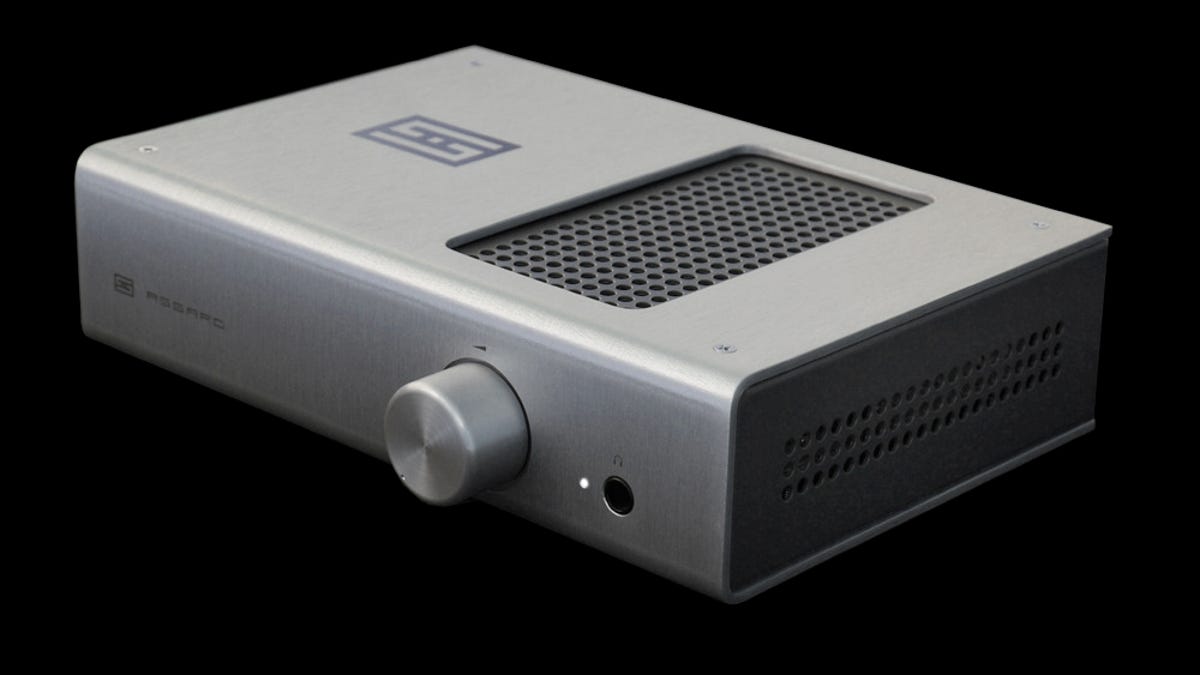How to make good headphones sound great
Think your headphones already sound pretty good? You ain't heard nothing yet, the Schiit Audio Asgard headphone amplifier will make your ears jump for joy!

High-end audio can be a rather expensive hobby, but every now and then I stumble across something really amazing that's priced for the real world. The Schiit Audio Asgard headphone amplifier looks and sounds like an overpriced high-end audio component, but it sells for $249!
How good is it? Much better sounding than run-of-the-mill headphone amplifiers, the sort designed around inexpensive integrated circuits found in home theater and stereo receivers. The Asgard is a no-holds-barred Class A, single-ended, zero-feedback design. Pardon the audiophile jargon; let's just say the Asgard is built like a serious piece of high-end gear.
Look inside and you see individual resistors, capacitors, transistors, etc, configured in a proprietary design by Schiit Audio's founders, Jason Stoddard, formerly of Sumo, and Mike Moffat, formerly of Theta Digital (two pioneering American high-end audio companies). The Asgard's chassis, circuitboard, and power transformer are all sourced from American suppliers, and the amp is built in Newhall, Calif. Oh, and Stoddard, his wife, or Moffat actually listens to each and every Asgard before it leaves the premises.
The Asgard's clean lines and elegant proportions strike me as distinctive, I love the look. The brushed, all-metal chassis' fit and finish are excellent, easily on par with high-end electronics that sell for four times the Asgard's price. That's no exaggeration, it's really nicely put together. I mostly listened to the Asgard with my Ayre C-5xe SACD/DVD-Audio player, but you could hook it up to any stereo analog connection.
The amp is fairly compact, and can be placed horizontally or vertically. The chassis measures 9 by 6.75 by 2.25 inches, and it weighs 4 pounds. Accessories include a 3.5 mm to 6.3 mm headphone plug adapter, and a high-quality 3.5mm to male RCA cable adapter.
The amp's high-current design makes it suitable for use with all sorts of headphones, rated from 8 to 600 ohms, and it worked perfectly with my favorite Grado, Hifiman, Phiaton, and Sennheiser headphones. A lot of companies toss around phrases like "high-current design," but judging by the amount of heat the Asgard generates, I believe the claim.
It runs very warm to the touch, and even so, Jason Stoddard told me the Asgard was built to have a 20-year lifespan, or at least 5 years if left on continuously. How many $249 consumer electronics products can you buy with that sort of life expectancy?
The first thing you notice about the Asgard's sound is its clarity, so music seems remarkably alive and realistic. I've demoed "Birth," an excellent-sounding film score on dozens and dozens of reviews, but the Asgard revealed unheard details in the music. The score was recorded at Abbey Road Studios, and I have never been more aware of the studio's acoustic "space," so I was virtually transported to the recording session. The strings sounded more believably natural, every pluck of the harp was perfectly formed, and the low bass passages were so much better-sounding than before. The score also features a lot of large drums, which can sound muddy on a lot of speakers, including some very expensive ones, but the Asgard used with my Grado RS-1 headphone, clarified the sound of each drum hit.
Can the Asgard rock? A few minutes listening to the Drive-By Truckers "Live in Austin, TX" CD convinced me the amp had both power and glory. Again, the thing that really surprised me was that I actually preferred the sound of this recording over headphones than my high-end speakers. The band's raw and raucous edge was all there, but it didn't hurt my ears.
I next compared the Asgard with Burson Audio's HA-160 headphone amp ($699). The two amps sounded awfully close, but sometimes the HA-160 was a little sweeter, more open, or more refined. The Asgard was definitely better than the HA-160 with my Hifiman HE-5 headphones, because the sound was more dynamically alive. The Asgard was also an especially nice match with my Sennheiser HD-580 headphones. It wasn't great with my Monster Turbine Gold in-ear headphones, but I generally don't like in-ears at home.
If you think I've oversold the Asgard after you bought it, send it back. You get 15 days to figure that out. A vacuum-tube headphone amplifier, the Schiit Audio Valhalla ($349) is due next month, and other Schiit Audio products will appear later this year. Schiit Audio is hot!

